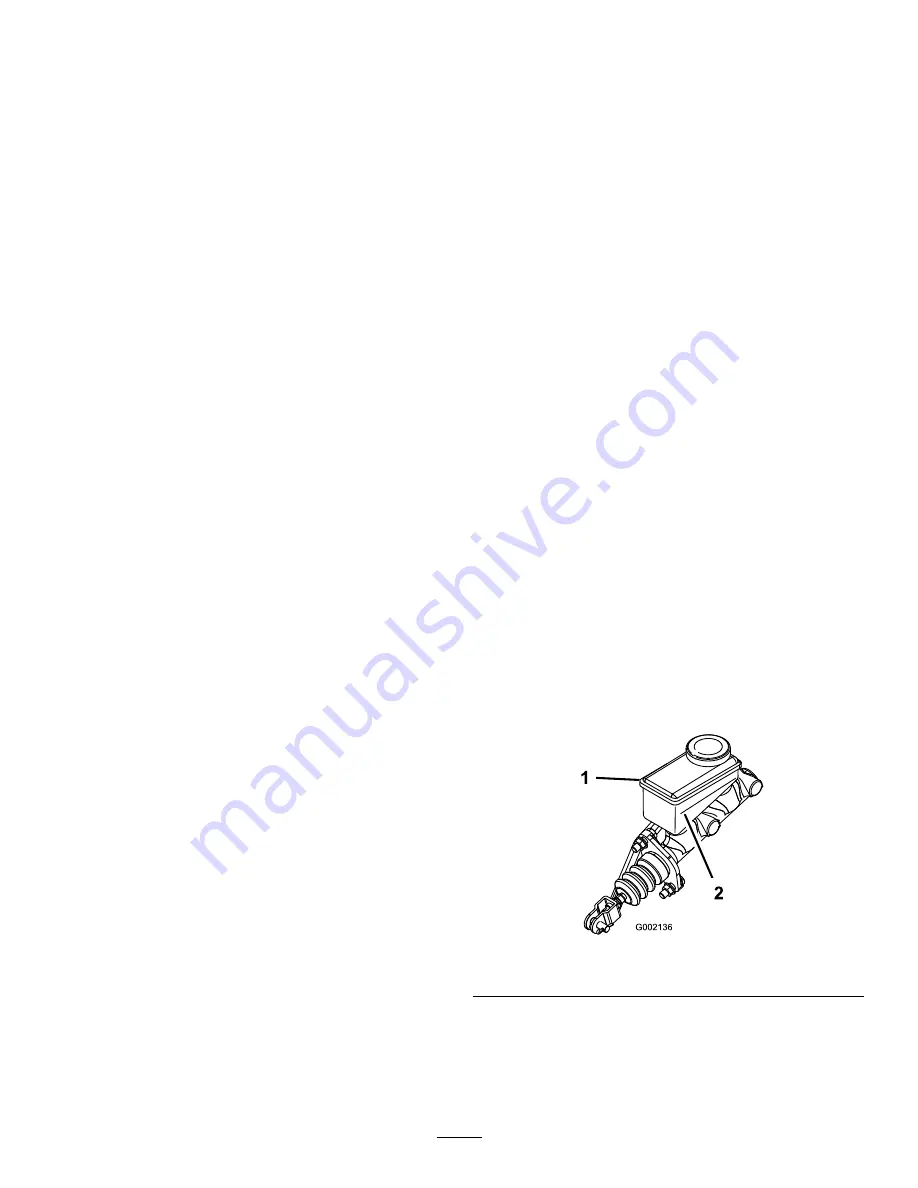
Cooling System
Maintenance
Cleaning the Engine Cooling
Areas
Clean the rotating screen, cooling fins, and external
surfaces of the engine every 100 operating hours or
more often under extremely dusty and dirty conditions.
Important:
Operating the engine with a blocked
rotating screen, dirty or plugged cooling fins, or
cooling shrouds removed will cause engine damage
due to overheating.
Important:
Never clean the engine with
pressurized water because water could contaminate
the fuel system.
Brake Maintenance
Inspecting the Brakes
Brakes are a critical safety component of the vehicle.
As with all safety components, they should be closely
inspected at regular intervals to ensure optimum
performance and safety. The following inspections
should be done every 100 hours:
•
Inspect the brake shoes for wear or damage. If the
lining (brake pad) thickness is less than 1/16 inch
(1.6 mm), the brake shoes should be replaced.
•
Inspect the backing plate and other components
for signs of excessive wear or deformation. If any
deformation is found, the appropriate components
must be replaced.
•
Check the brake fluid level; refer to Checking the
Brake Fluid Level.
Checking the Brake Fluid
Level
The brake fluid reservoir is filled and shipped from the
factory with DOT 3 brake fluid. Check the level before
the engine is first started and every 8 hours or daily,
thereafter.
1. Park the machine on a level surface, set the parking
brake, turn the ignition off, and remove the key.
2. Look at the side of the reservoir. The level should
be above the Minimum line (Figure 50). If the fluid
level is low, clean the area around the cap, remove
the cap, and fill the reservoir to above the Minimum
line. Do not overfill.
Figure 50
1.
Brake fluid reservoir
2.
Minimum line
Adjusting the Parking Brake
Check the parking brake adjustment every 200 hours.
1. Pry the rubber cover off of the parking brake.
37








































